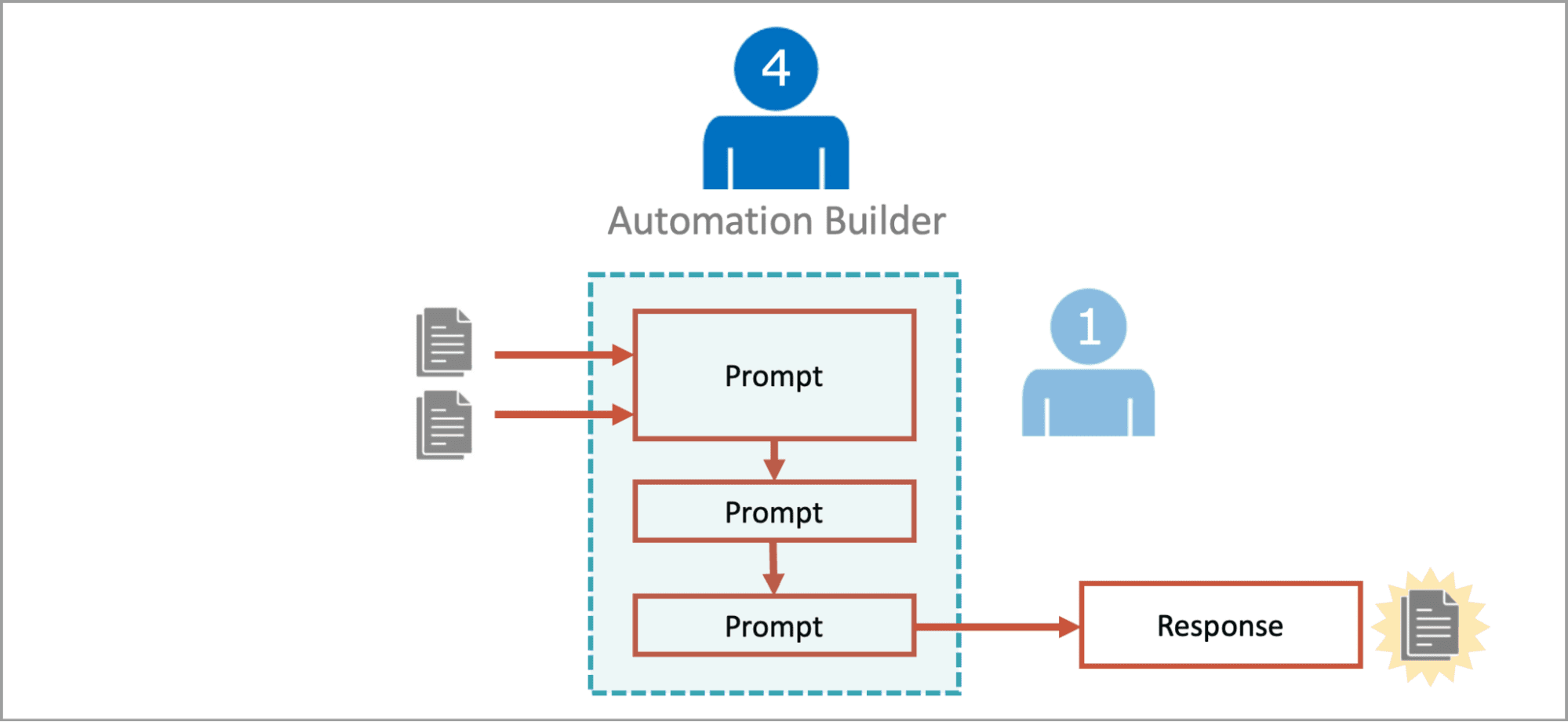Pope Francis’s popemobile is getting the second life he would have wanted
In the city of Bethlehem, a team of mechanics is currently working around the clock to install a medical fridge, air diagnostic equipment, oxygen supply, and blast-proof windows into one of the most iconic vehicles in the world. The team is tasked with turning Pope Francis’s old popemobile into a mobile health clinic for the children of Gaza—and it could be operational as soon as next week. The project, called Vehicle of Hope, is spearheaded by the Catholic humanitarian organization Caritas, which runs more than 160 agencies across the world that work to provide aid in crisis zones. Caritas Jerusalem, which has advocated for an immediate ceasefire in Gaza, currently operates 14 medical teams across the Gaza Strip, two of which are actively working in Gaza City. Palestinian Authority President Mahmoud Abbas originally gifted the popemobile currently undergoing renovation to Pope Francis, who died in April, during his visit to Bethlehem in 2014. Francis later donated the car, a custom-designed Mitsubishi, to the Franciscan Order in Jerusalem. This allowed Caritas Jerusalem to convert it into a medical clinic. Now, amidst Israel’s resumed air and ground campaign in Gaza, Caritas is hoping that the symbolic vehicle will help humanitarian workers enter the Gaza Strip to treat children in need. [Photo: courtesy Caritas] Repurposing a long-standing tradition Since the beginning of automobiles, nearly every pope has used multiple cars for travel, including Pope Francis. Francis’s characteristic popemobiles included several different Jeeps, an Isuzu, and a Kia Sedona, and were typically outfitted with a raised transparent barrier to protect the pontiff as he greeted onlookers. According to Peter Brune, secretary general of Caritas Sweden, it’s become a tradition for local leaders to gift the Pope a special popemobile when he visits a new country. “I guess hundreds of them by now, all over the world,” Brune says. The idea for a popemobile clinic comes as, on March 17, Israel ended a two-month-long ceasefire and resumed airstrikes and ground attacks in Gaza. More than 48,000 people have been killed in the Gaza Strip so far, and only 48% of primary care facilities in the area are currently functional, according to a report from the World Health Organization in early March. It also follows Israel’s full blockade of humanitarian aid and other supplies into the Gaza Strip, which began March 2. The stoppage leaves communities there in desperate need of humanitarian supplies, food, and medical attention. Brune hopes that the symbolic popemobile clinic will be enough to convince authorities to allow the vehicle into Gaza. In an interview with The Washington Post, Anton Asfar, secretary general of Caritas Jerusalem, shared that Caritas Jerusalem plans to request permission for entrance from COGAT, the Israeli Defense Ministry unit that coordinates civil affairs in occupied territories (COGAT told The Post that approval would actually need to come from the government itself.) “We are trying to use this powerful symbol to convince those who are in charge to let it in, and we hope that it will be allowed in,” Brune says. “It’s very important to make sure that the humanitarian community can do their job.” [Photo: courtesy Caritas] Giving a papal symbol new purpose The idea to transform the popemobile into a clinic came from a conversation last year between Brune and Asfar during which they brainstormed “new symbols” that could represent this cause and bring more attention to the children in Gaza. “Caritas Jerusalem has more than 100 staff working out of Gaza—actually, several of them have been killed,” Brune says. “We are so desperate about bringing across this message that the civilians in Gaza, especially the children, are being so badly affected by this [conflict]. A few months ago, when it was colder, they were freezing to death; they were starving to death.” They realized that the popemobile could be the perfect tool. “The popemobile is a very powerful symbol,” Brune says. “So we said, ‘Let’s upscale it. Let’s give it a new mission.’” That mission, Brune says, would be to turn the popemobile into a mobile medical clinic, staffed by doctors and nurses from Caritas Jerusalem, which could provide on-the-move assistance to those in need. Cardinal Anders Arborelius of Sweden, who is set to join the upcoming conclave, relayed the concept to the Pope late last year. Francis, who repeatedly advocated for a lasting ceasefire in Gaza and spent the last month of his life calling a small church in Gaza every day, quickly gave his consent. “We presented the idea to the late Pope Francis, and he approved the idea. That was amazing,” Brune says. “He said, ‘Go for it. Gaza is very close to my heart, and if my popemobile can be used for this new and much more important mission, then go for it.’” [Photo: courtesy Caritas] Installing a decade’s worth of repairs, and then some Whe
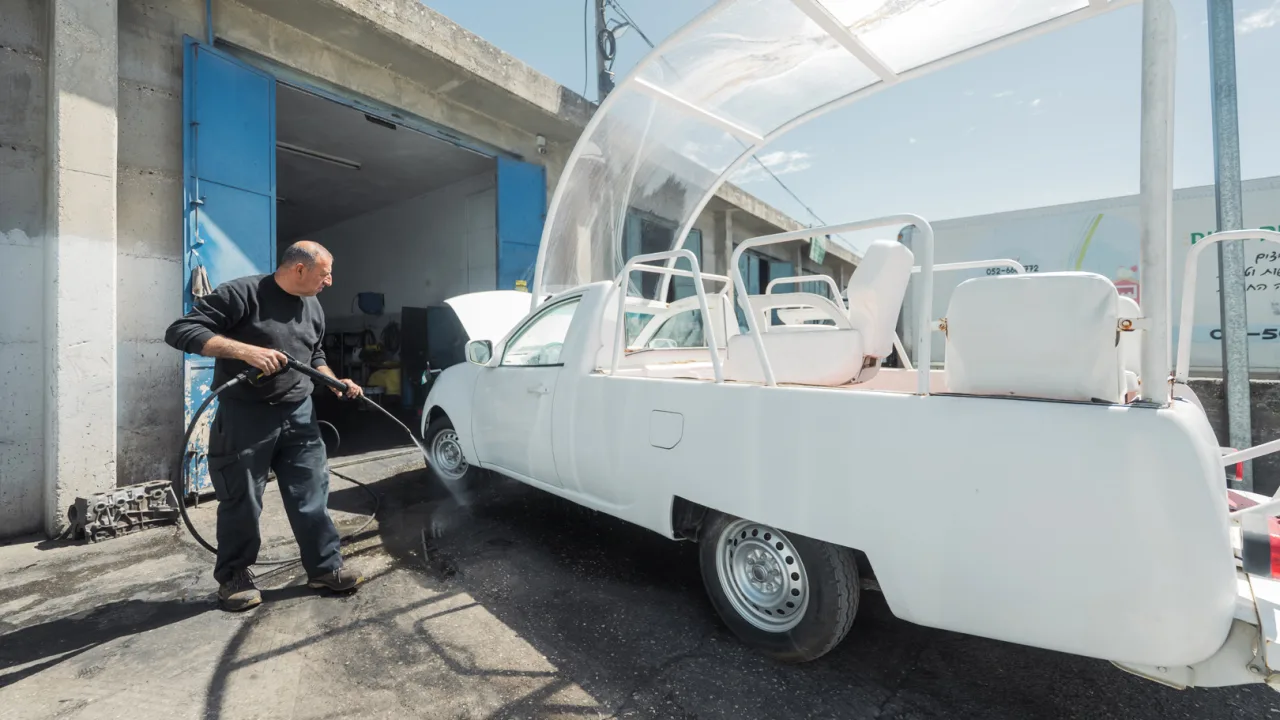
In the city of Bethlehem, a team of mechanics is currently working around the clock to install a medical fridge, air diagnostic equipment, oxygen supply, and blast-proof windows into one of the most iconic vehicles in the world. The team is tasked with turning Pope Francis’s old popemobile into a mobile health clinic for the children of Gaza—and it could be operational as soon as next week.
The project, called Vehicle of Hope, is spearheaded by the Catholic humanitarian organization Caritas, which runs more than 160 agencies across the world that work to provide aid in crisis zones. Caritas Jerusalem, which has advocated for an immediate ceasefire in Gaza, currently operates 14 medical teams across the Gaza Strip, two of which are actively working in Gaza City.
Palestinian Authority President Mahmoud Abbas originally gifted the popemobile currently undergoing renovation to Pope Francis, who died in April, during his visit to Bethlehem in 2014. Francis later donated the car, a custom-designed Mitsubishi, to the Franciscan Order in Jerusalem. This allowed Caritas Jerusalem to convert it into a medical clinic.
Now, amidst Israel’s resumed air and ground campaign in Gaza, Caritas is hoping that the symbolic vehicle will help humanitarian workers enter the Gaza Strip to treat children in need.
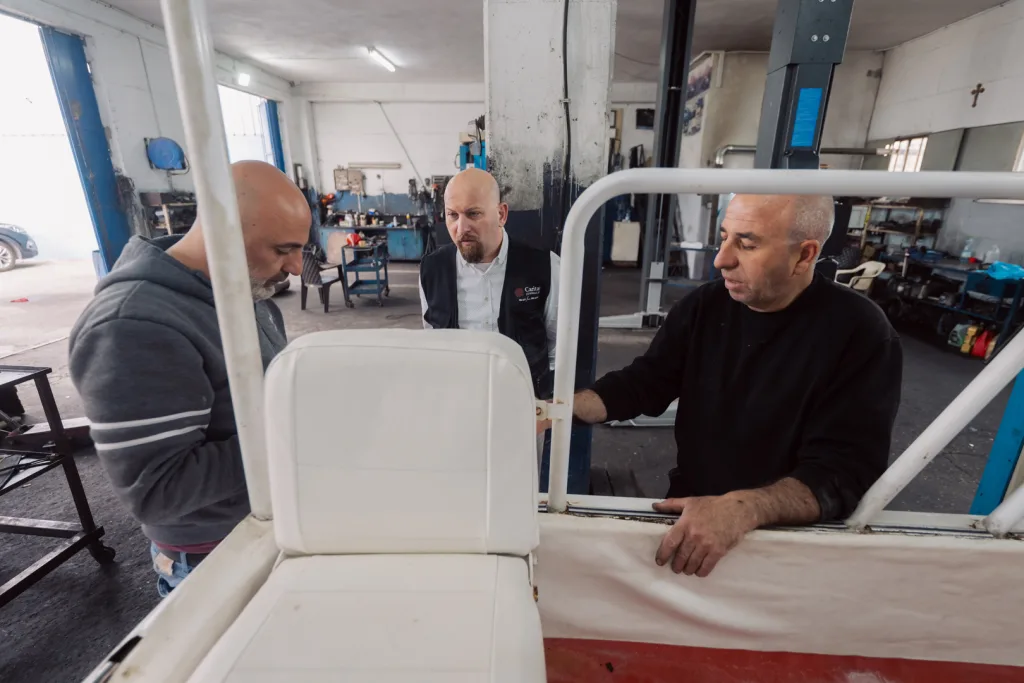
Repurposing a long-standing tradition
Since the beginning of automobiles, nearly every pope has used multiple cars for travel, including Pope Francis. Francis’s characteristic popemobiles included several different Jeeps, an Isuzu, and a Kia Sedona, and were typically outfitted with a raised transparent barrier to protect the pontiff as he greeted onlookers. According to Peter Brune, secretary general of Caritas Sweden, it’s become a tradition for local leaders to gift the Pope a special popemobile when he visits a new country. “I guess hundreds of them by now, all over the world,” Brune says.
The idea for a popemobile clinic comes as, on March 17, Israel ended a two-month-long ceasefire and resumed airstrikes and ground attacks in Gaza. More than 48,000 people have been killed in the Gaza Strip so far, and only 48% of primary care facilities in the area are currently functional, according to a report from the World Health Organization in early March.
It also follows Israel’s full blockade of humanitarian aid and other supplies into the Gaza Strip, which began March 2. The stoppage leaves communities there in desperate need of humanitarian supplies, food, and medical attention.
Brune hopes that the symbolic popemobile clinic will be enough to convince authorities to allow the vehicle into Gaza. In an interview with The Washington Post, Anton Asfar, secretary general of Caritas Jerusalem, shared that Caritas Jerusalem plans to request permission for entrance from COGAT, the Israeli Defense Ministry unit that coordinates civil affairs in occupied territories (COGAT told The Post that approval would actually need to come from the government itself.)
“We are trying to use this powerful symbol to convince those who are in charge to let it in, and we hope that it will be allowed in,” Brune says. “It’s very important to make sure that the humanitarian community can do their job.”
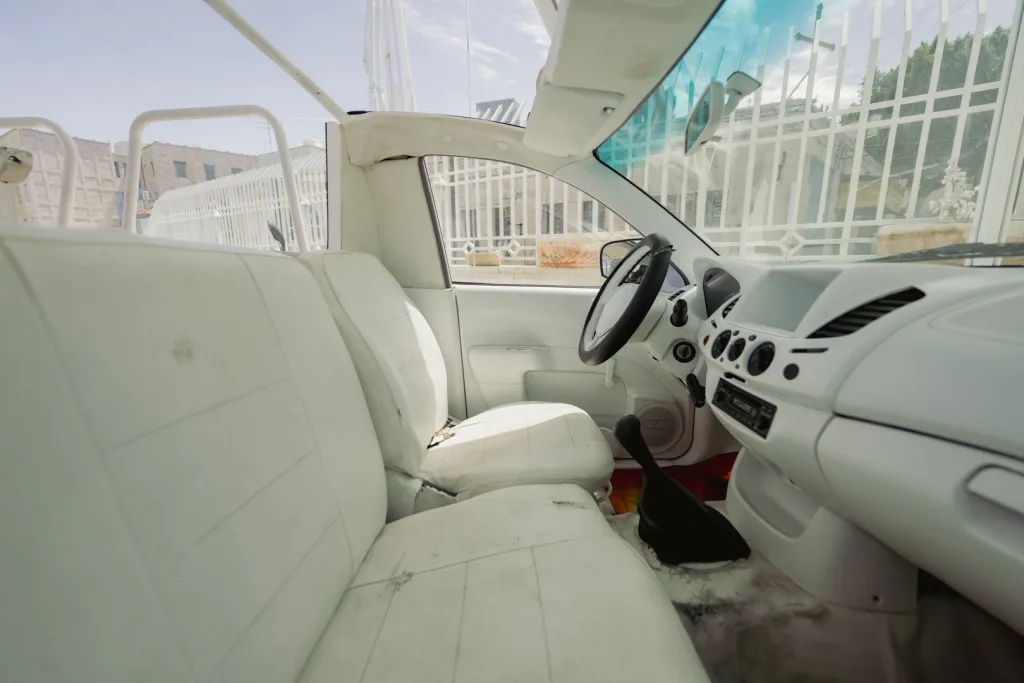
Giving a papal symbol new purpose
The idea to transform the popemobile into a clinic came from a conversation last year between Brune and Asfar during which they brainstormed “new symbols” that could represent this cause and bring more attention to the children in Gaza.
“Caritas Jerusalem has more than 100 staff working out of Gaza—actually, several of them have been killed,” Brune says. “We are so desperate about bringing across this message that the civilians in Gaza, especially the children, are being so badly affected by this [conflict]. A few months ago, when it was colder, they were freezing to death; they were starving to death.”
They realized that the popemobile could be the perfect tool. “The popemobile is a very powerful symbol,” Brune says. “So we said, ‘Let’s upscale it. Let’s give it a new mission.’”
That mission, Brune says, would be to turn the popemobile into a mobile medical clinic, staffed by doctors and nurses from Caritas Jerusalem, which could provide on-the-move assistance to those in need. Cardinal Anders Arborelius of Sweden, who is set to join the upcoming conclave, relayed the concept to the Pope late last year. Francis, who repeatedly advocated for a lasting ceasefire in Gaza and spent the last month of his life calling a small church in Gaza every day, quickly gave his consent.
“We presented the idea to the late Pope Francis, and he approved the idea. That was amazing,” Brune says. “He said, ‘Go for it. Gaza is very close to my heart, and if my popemobile can be used for this new and much more important mission, then go for it.’”
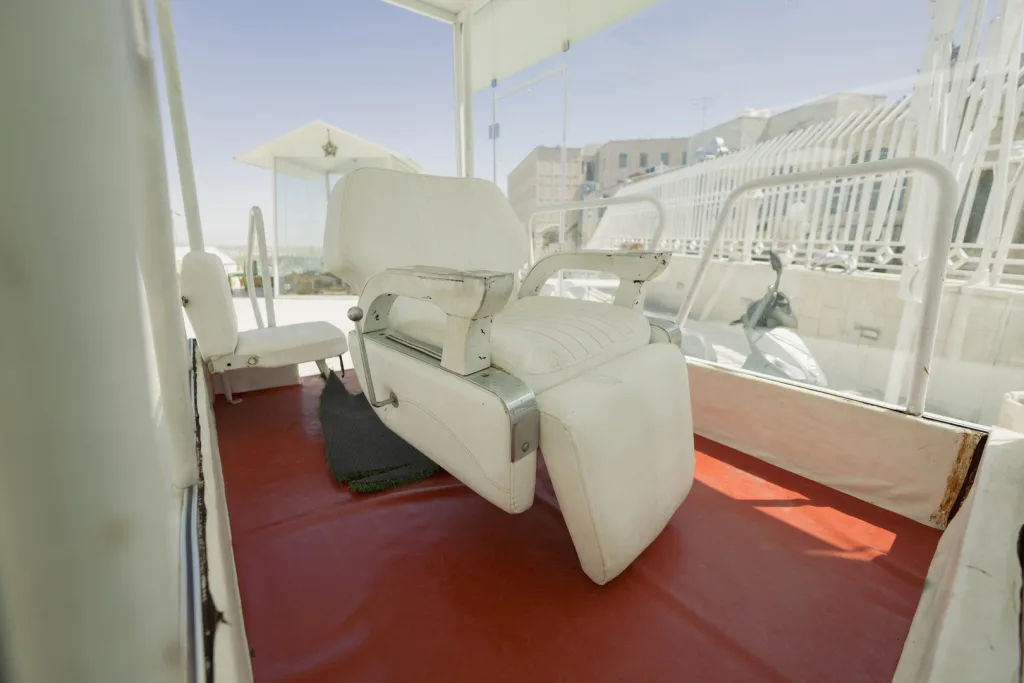
Installing a decade’s worth of repairs, and then some
When mechanics started work on the once-retired popemobile several weeks ago, they found several problems that you might expect from a car that’s been out of use for over a decade: rust, a faulty engine, and a flat tire.
“When we found the car in Bethlehem, we looked into whether it was actually still in such a condition that you could make it function in its new role,” Brune says. “The mechanics said, ‘Yes, it’s doable. It’s in a bit of a bad shape, but it’s absolutely doable.’”
The complicated process involves fitting the vehicle with equipment for diagnosis, examination, and treatment—including rapid infection tests, suture kits, syringes and needles, and oxygen supply. A special air-conditioning system will be used to keep medicines at the right temperature, and mechanics will also install blast-proof windows to protect occupants.
“It’s not only beautiful, it’s also very practical,” Brune says. “It will be capable of serving kids, and it will be equipped with air-conditioning so that it can keep the medical equipment at the right temperature and then make it also a good environment for the child to feel safe and taken care of.”
Using design to create a practical solution, and an emotional connection
While parts of the popemobile have to be changed in order to add medical equipment, Brune says one of the main goals of this project is actually to keep the bones and appearance of the car as similar to its original appearance as possible. Brune and his team made a specific point to keep the seat Pope Francis once used intact.
“One important symbolic piece is the seat where the Pope used to sit during when he was riding the popemobile—that’s where we will place the children who will be attended to by medical doctors and nurses,” Brune says. “We want to say, ‘You are the most important, now you sit in the chair of the Pope.’”
Initially, the Vehicle of Hope was scheduled to be completed in around three weeks from now. But Brune says mechanics are so invigorated by excitement around the concept that they’ve predicted it could be ready as soon as this coming Tuesday. In the future, Brune hopes that similar mobile clinics can be scaled and used in other areas facing crises. For now, though, his focus is on Gaza.
“The Vehicle of Hope is telling the children, ‘There is a future for you. There is a time when the adults have agreed to stop fighting, stop bombing. And we want to give you this notion of hope,’” Brune says.

























































































































